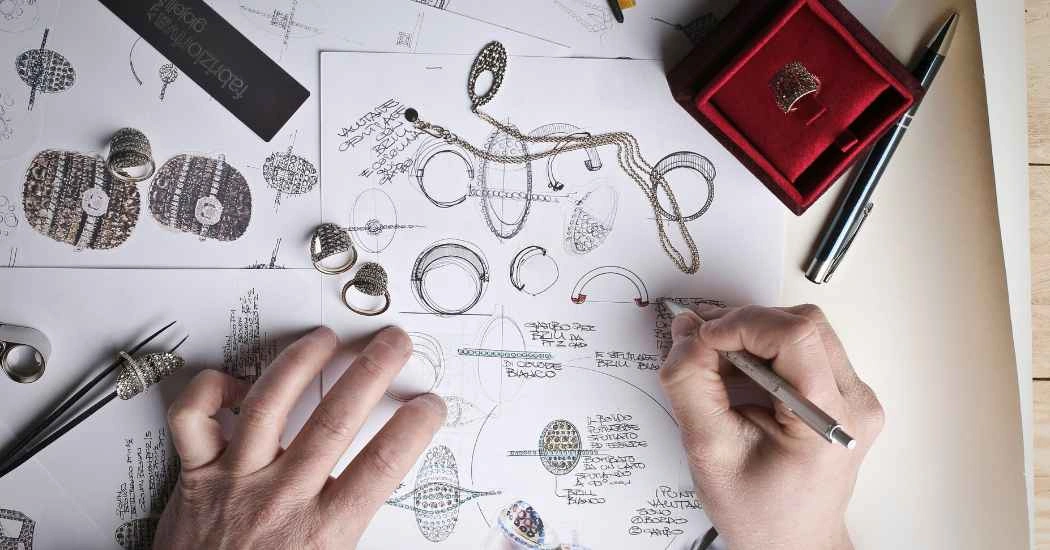Design industry infringement happens when someone copies the unique look of a patented product, possibly misleading consumers into buying what they think is the original.
Unlike utility patents, which cover what a product does, design patents focus on its appearance. Infringement of a design industry can pose severe risks for brands that have carefully considered their aesthetic qualities.
Understanding this issue is important to protect your unique style or avoid trouble when borrowing ideas. We’ll walk you through the basics and show you how to defend yourself if your design is called into question.
If you’re craving more knowledge about patent infringements, head to our blog for deeper insights! Am Badar & Am Badar’s services page has more information.
What Are Design Industry?
Unlike utility patents (protecting how a product works), design industry keep competitors from copying a product’s distinctive appearance, such as shape, patterns, or ornamental details. Let’s learn more about the definition below.
Definition of Design Industry
A design industry is a form of intellectual property that protects the visual aspects of a product. Specifically, it covers how a product looks, rather than how it works.
For example, a design industry could protect the sleek outline of a smartwatch, the unique stitching pattern on a handbag, or the distinct shape of a modern lamp.
Design industry are issued based on the product’s drawings, and the legal protection typically lasts 15 years in the U.S.
This protection gives the patent holder exclusive rights to that particular look. Thus, it stops others from making, using, or selling “substantially similar” products, which could confuse buyers.
The Concept of Design Industry Infringement
This infringement happens when someone makes or sells a product that looks too close to a patented design. Such cases are expected in fields like tech, fashion, and home decor.
The main test courts use is the “ordinary observer test.” Would a typical customer think the copycat product looks identical to the original? If the answer is yes, it’s infringement.
The courts also consider prior art, meaning older designs that might already look similar. If the accused design closely resembles this older art, it might avoid infringement claims.
Crocs, Inc. v. International Trade Commission is an example of design industry infringement. The Federal Circuit reversed multiple ITC findings, ultimately ruling in Crocs’s favor on both patent validity and infringement claims.
Crocs argued that competitors were selling knockoff clogs almost identical to its iconic design. The Federal Circuit sided with Crocs, focusing on two big points.
First, using the “ordinary observer” test, the court found that a typical customer could easily mistake the knockoffs for genuine Crocs because they looked similar. This similarity meant the design industry was infringed, as it protected the unique appearance of the clogs.
Second, the court closely examined Croc’s utility patent for its foam strap system. Unlike other foam straps, Crocs’ strap provided a “passive restraint” that held the foot comfortably without constantly pressing on the heel.
The court found this feature innovative because it created a unique, comfortable fit that wasn’t obvious in prior designs. Since no one else had used foam straps this way, Crocs’ utility patent was upheld, meaning their invention was considered new and non-obvious.
Consequences of Design Industry Infringement
Getting hit with this infringement claim can lead to severe consequences, like legal, financial, and reputational fallout.
Legal Repercussions
The legal repercussions are intense if caught infringing on a design patent. Design industry laws give the patent owner the right to take every dollar you made from the infringing product. Yes, that’s all your profits.
This rule (under Section 289 of U.S. patent law) is unique to design industry and different from utility patents, where you might just pay a more minor royalty or lose profits.
Besides paying damages, a court may also issue an injunction, meaning the infringer has to stop selling or producing the infringing product immediately.
Impact on Businesses
Design industry infringement can have a lasting impact on a business financially and reputation-wise. When a company is accused of copying a design, customers might start seeing it as less original or creative, which can be hard to shake off.
The impact is equally significant financially. If found guilty, the infringing business may have to pay for all profits made from the infringing design.
Legal costs can add up fast, with court fees, legal counsel, and the potential halt of product sales. This can be brutal for smaller businesses, which might struggle to recover.
How to Defend Against Design Industry Infringement Claims
Defending against a design infringement claim isn’t easy, but a few strategies might help. One common defense is to prove that your design is different enough from the patented one. Even minor visual differences can sometimes be enough to avoid infringement.
Another approach is to show that your design is based on “prior art”, meaning it looks like designs before the patent was issued. This could work in your favor if your design has clear roots in older styles.
You could also argue that any similarities are purely functional, not ornamental, as design patents cover looks, not function. Whatever approach you choose, working with a patent attorney can help you explore the best defenses and avoid costly penalties.
A simple misunderstanding about design industry infringement can lead to costly legal issues and damage your brand. By learning the basics, you can stay ahead, protect your ideas, and avoid stepping on someone else’s designs.
And if you’re ever in doubt, getting advice from a patent professional is always smart. Ultimately, respecting design patents can help you with legal protection and build a trustworthy, innovative brand.
Got a design to protect? Let our team at Am Badar & Am Badar’s Industrial Design Prosecution Service handle it. We have tons of experience and thousands of successful applications. Reach out to discuss with our experts!
Curious about how design protection impacts market success? Read The Essential of Industrial Design Protection on Market Success or more insight now!






